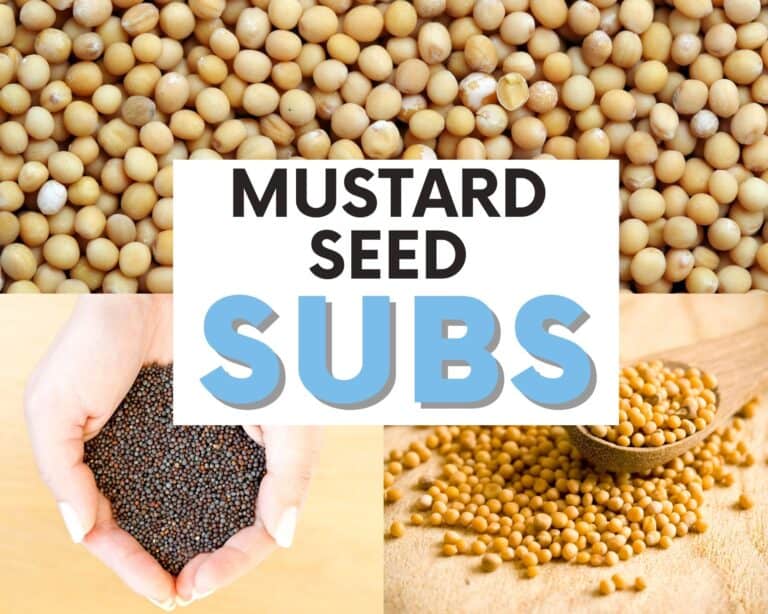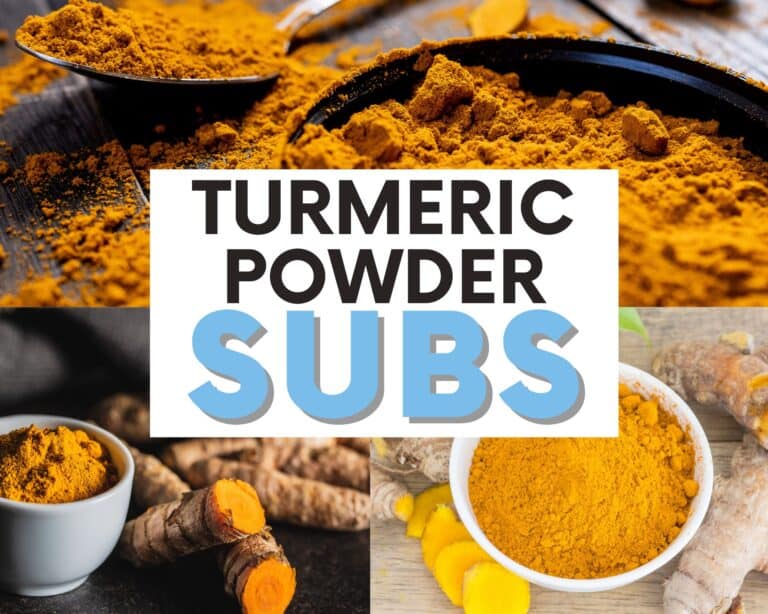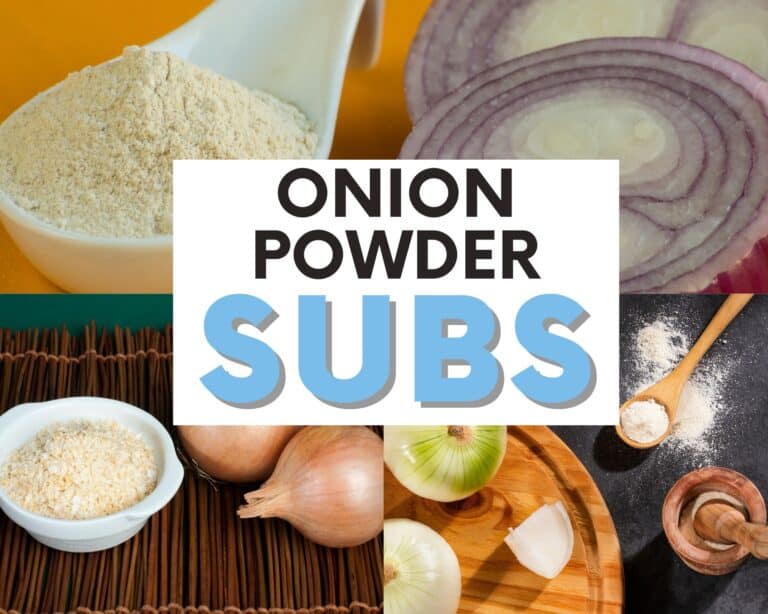The Best Substitutes for Fresh and Dried Ginger
This post may contain affiliate links. Please see my disclosure policy for details.
Ginger, with its pungent and robust flavor, is a culinary powerhouse in the kitchen. From adding a zing to your stir-fries to soothing teas that warm the soul, ginger is a beloved ingredient by chefs and home cooks alike.
However, what happens when the cupboard is bare of this spicy root or if it’s not to your taste buds’ liking? Fear not!
We’re about to unveil a range of substitutes that can give you a ginger-like kick in your dishes.
This in-depth guide will take you through the best alternatives for fresh and dried ginger, ensuring that you never have to compromise on flavor, even in the absence of the real thing.

Substitute Options for Dried Ginger

Fresh Ginger
Fresh ginger is the closest you can get to replicating the flavor of dried ginger in a dish.
Its taste is brighter and slightly more citrusy, making it an excellent choice for soups, marinades, and just about anything that calls for dried ginger.
The intensity of fresh ginger means you’ll need to use about three times as much to mimic the flavor of dried ginger fully.
Crystallized Ginger: Rinsed and Chopped
Crystallized ginger is fresh ginger that has been dried and preserved in a soft sugary syrup.
After rinsing away the syrup, finely chop the ginger to use as a substitute for dried ginger. This option injects a sweet note into your recipes and works particularly well in baking and desserts.
Aim for a 1:1 substitution ratio for this transformation to bring about the ginger flavor without the moisture.
Ginger Juice
Should you be making a dish that requires the texture of dried ginger, ginger juice can step in.
It’s the extracted liquid from the root and can be added directly or infused like fresh ginger.
Keep in mind that the potency of ginger juice is quite high, so use a conservative one to two teaspoons to one tablespoon as a replacement for an entire teaspoon of dried ginger.
Substitute Options for Fresh Ginger

Crystallized Ginger: Rinsed and Chopped (for Baking)
For baking applications, the sweet crystal texture of ginger can enhance recipes, however, make sure not to confuse it with the moist texture of fresh ginger.
Be mindful of the extra sugar content, and reduce the sweetness elsewhere in the recipe if necessary.
A 1:3 substitution (1 tablespoon of crystallized ginger for 3 tablespoons of fresh ginger) is a good starting point.
Galangal
Galangal is often called ‘Thai ginger’ but has a more peppery and piney flavor. It is woody and tough, so it’s typically removed before serving.
Use it in an equal one-to-one substitution for fresh ginger. Depending on the dish, you may need to add more garlic or traditional ginger to achieve the same balance you’d find in a dish made with true ginger.
Ground Ginger (Best for Baking)
When a recipe calls for fresh ginger but you only have ground ginger, you can still achieve the pungent spiciness in the dish.
Ground ginger is best suited for baking as it evenly disperses, giving your cakes, cookies, and breads a consistent flavor.
The rule of thumb is to substitute 1/8 to 1/4 teaspoon for every tablespoon of fresh ginger.
What Do You Do If You Do None Of Those Substitutes For Ginger??
Pumpkin Pie Spice
A mix of cinnamon, nutmeg, allspice, cloves, and ginger, pumpkin pie spice can be an effective multi-substitute offering a more complex flavor profile.
It adds warmth and a spicy note, perfect for chocolaty desserts and holiday treats like pumpkin pie.
The substitution ratio will depend on the recipe, but start with a one-for-one exchange and adjust according to taste.
Allspice
Allspice, also known as Jamaica pepper, has notes of cinnamon, nutmeg, and cloves with a hint of pepper.
It’s a great addition to dishes where ginger plays a supporting role and brings a deeper, more complex flavor.
A 1:1 substitution will usually suffice, but err on the side of less if you’re uncertain about its potency.
Ground Cardamom
Cardamom is an aromatic spice with a sweet, floral note that can beautifully replace ginger in both sweet and savory recipes.
It’s potent, so a little goes a long way. Start with a 1:1 substitution and increase to taste if you’re looking for a more pronounced effect.
In baking, it pairs particularly well with citrus flavors like orange.
My Final Thoughts On Subs For Ginger
Experimentation in the kitchen is a key ingredient in culinary creativity. This guide has illustrated that even the absence of ginger in your pantry shouldn’t be a deterrent to crafting delicious meals.
Each of these substitutes carries its unique flavor profile and can be tailored to your dish with a little finesse.
Whether you find yourself out of ginger, avoiding it due to personal taste, or just looking to try something new, these alternatives provide both culinary flexibility and a chance to create dishes that are as unique as they are delicious.
Happy cooking, and may your culinary explorations be as limitless as your imagination.






